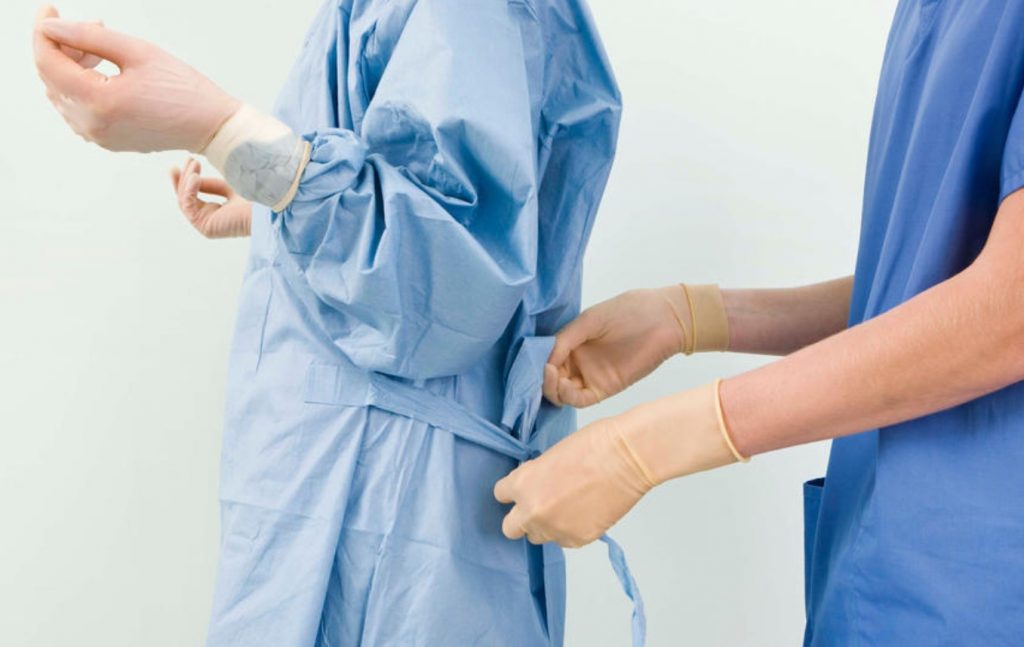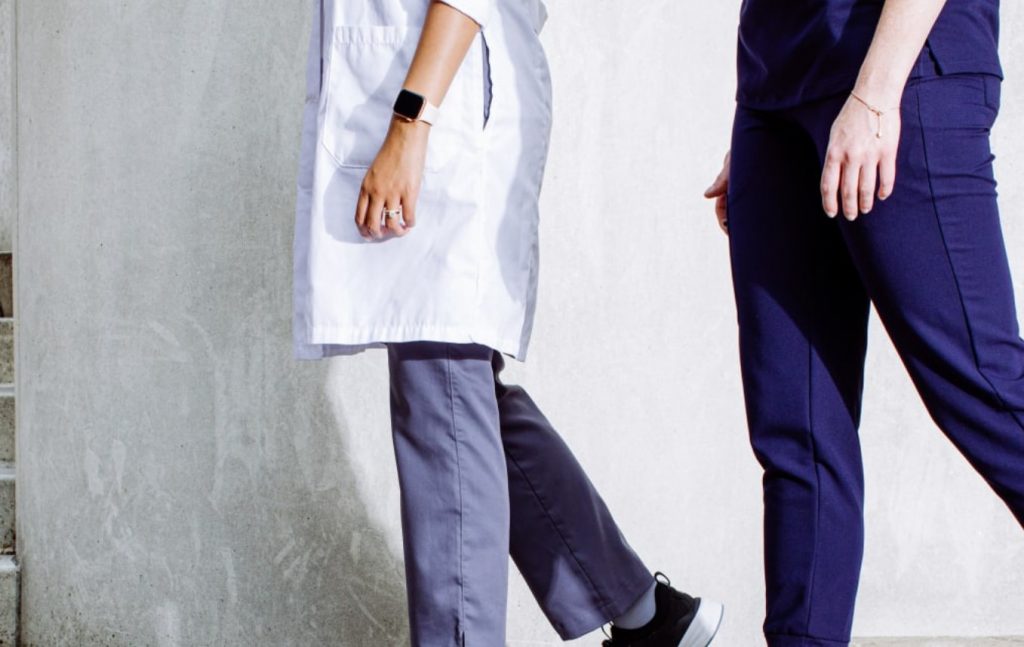Being a medical professional is constantly challenging. Those who work at hospitals and other health facilities have to take care of countless patients each day, and at times, within the same room. They’re often exposed to all sorts of microorganisms from their patients—most of which can cause illnesses if not handled properly.
Clothing is one way for medical providers to protect themselves against cross-contamination while at their workplace. However, there’s a lot more to medical uniforms than meets the eye.
Common Medical Workers Attire
There are many types of attire that medical workers wear, depending on their profession and specialization.
-
Scrubs

Scrubs are usually worn in the surgical area, or by medical assistants and other support staff in the clinic or office setting. This type of attire is designed to be comfortable, loose-fitting for easy movement, and often light-colored to easily show stains. Physical therapists also wear scrubs, especially when providing in-home care or therapy to their patients.
Depending on the specialty area, scrubs may also be designed a little differently. Pediatric scrubs, for example, usually have child-friendly prints that appeal to kids. If you’re a pediatric facility worker who needs high-quality scrubs for better protection, there are helpful resources available online.
-
White Coat

A white coat is the most recognizable attire for a medical worker. As such, it’s often used to signify someone’s authority and expertise in the medical profession.
Doctors generally wear traditional attire and put on a white coat before making rounds at the hospital. These coats are usually made of cotton or polyester, with two buttons on the front, and are typically long enough to cover the backside. Because of this, white coats are often referred to as the ‘doctor’s coat’ in the medical profession.
The Attire That Most Patients Preferred
According to a study, most patients’ preference when it comes to medical attire greatly depends on the context and their region.
For example, formally dressed doctors in a white coat and name tag are trusted by most adults ages 65 and above. Regardless of the medical worker’s gender, the white coat is the medical uniform style that’s most preferred. For surgeons, however, the scrub suit is more preferable.
Meanwhile, there are some who believe that most young adults see scrubs as the more appropriate attire for medical workers. This might be the result of media perpetuating medical workers in such attires.

How Medical Worker’s Attire Influences Patients
Although workplace attires and uniforms don’t seem like a big deal, they actually play a role in influencing the perception of patients towards the facility and the medical workers they deal with.
Here are more reasons why you might want to consider more appropriate uniforms for medical professionals, especially if you run a medical facility.
-
It Conveys Professionalism
When patients come into a doctor’s office or any other medical facility, they want to be reassured by the professionalism of the physician and their staff. The patient’s initial experience in any medical facility can make them feel more positive and encourage them to seek treatment if they see that everyone looks professional.
Moreover, the attire of medical workers can create an impression about the quality of service a facility provides to patients. This may even extend to the perceived effectiveness of treatments they offer. This means it’s also essential for medical offices to uphold high professional standards even with their worker attires.

-
The Color Influences Patient Perceptions
Another reason why medical attire matters to patients is the ability of colors to influence perception. For example, the color white, which most doctors and nurses wear, can help make patients feel more at ease. It also emphasizes cleanliness, which makes medical workers look neat and more professional.
Green is also standard, as this represents nature and life—which could be soothing for patients that feel anxious about their condition or fearful about their visit.
-
Material Quality May Provide Assurance
Medical workers are also advised to wear attires made of materials that are comfortable to the touch and avoid wearing anything with metal or rough edges. During sensitive or major procedures where workers come in close contact with patients, it’s an ideal practice to make sure that there are no materials that may cause irritation or injury upon contact.
Professionals who work with children, for example, need to be aware that kids are naturally more delicate. Thus, most parents prefer that medical workers who attend to them wear clothing made with softer fabrics or those specifically designed for children. This measure can also make them feel that their concerns are taken seriously.

-
It Creates Distinction
The proper attire also makes medical workers easily distinguishable from other people. When a medical staff is in uniform, patients can identify them quickly. It’s crucial especially when they have to respond promptly to emergencies. People can quickly approach them and grab their attention for help.
Also, most people get a better sense of security when a medical professional is around, especially when they’re in uniform. It means that someone can help them in case of medical emergencies.
-
It Encourages Trust And Confidence
First impressions are often the most important. One proof is how a medical worker’s attire can affect a patient’s perception of them and their confidence in their abilities to help them.
The proper attire can also help gain patients’ trust and confidence. This is essential to build open communication in a patient and doctor relationship. A good professional relationship encourages patients to disclose vital personal information that may help medical workers to plan a more suitable and effective treatment plan.
If the medical worker’s attire doesn’t look appropriate nor professional, patients may feel as if they’re not competent enough to help them.

Final Words
A medical worker’s attire is an essential factor in the perceived quality of patients about the care and treatment they’re receiving. Medical workers who wear appropriate clothing are seen as more professional, which also creates more trust. Patients also tend to feel more comfortable with a medical staff that dresses correctly, as it also helps in identifying them faster when they’re needed. If you want your patients to feel more confident about your medical facility and its services, consider putting more thought into your staff attires.

